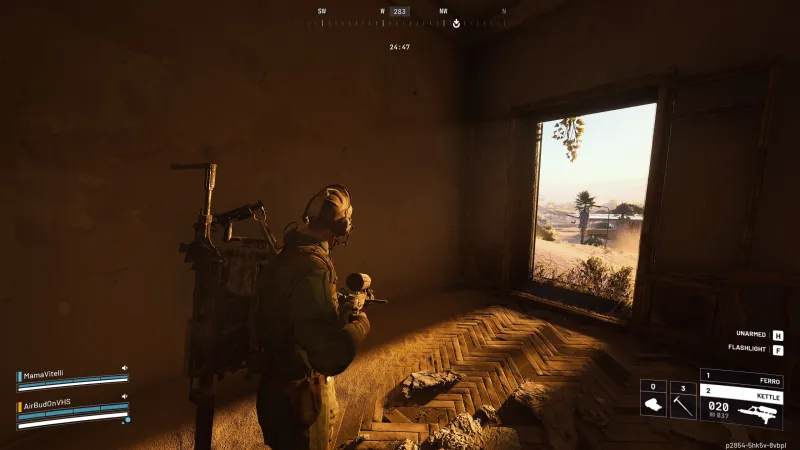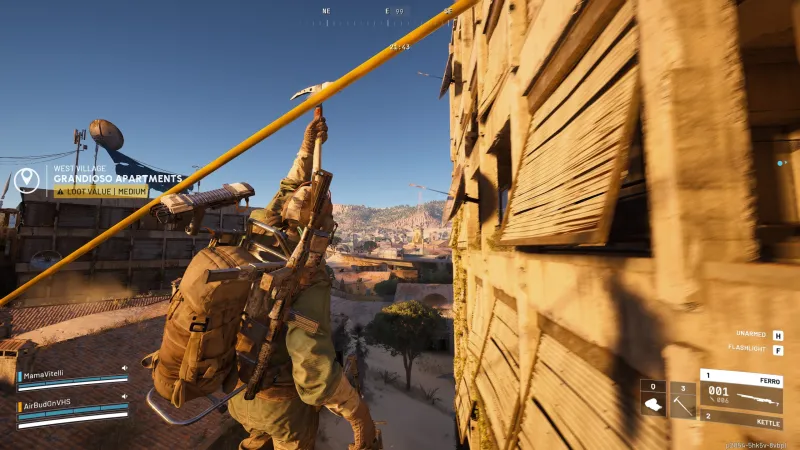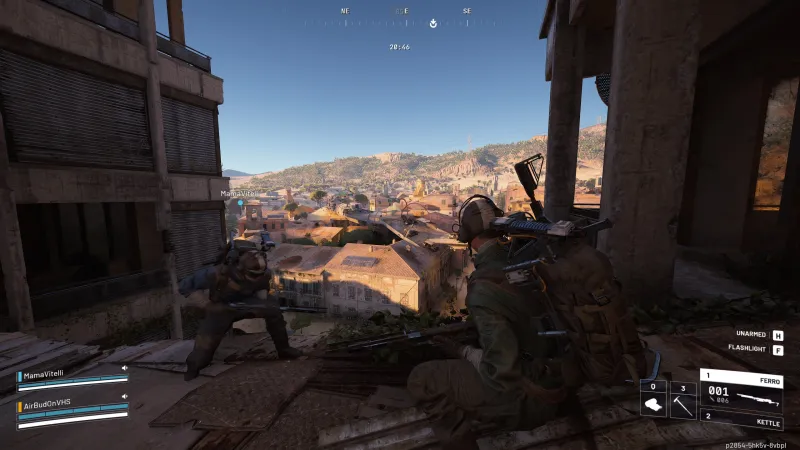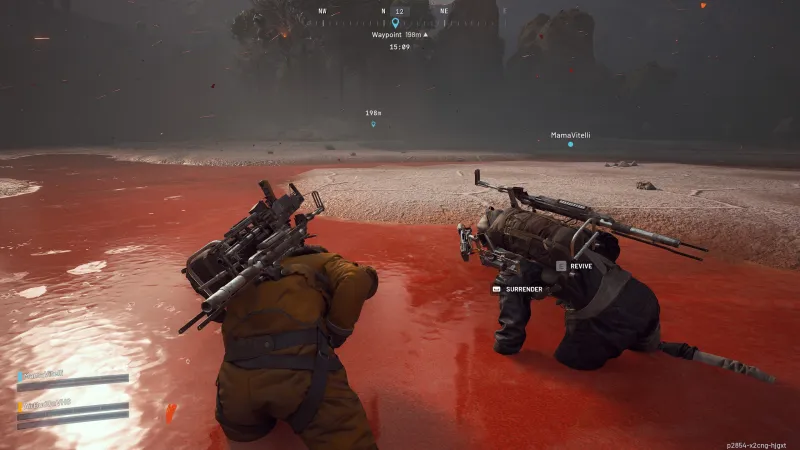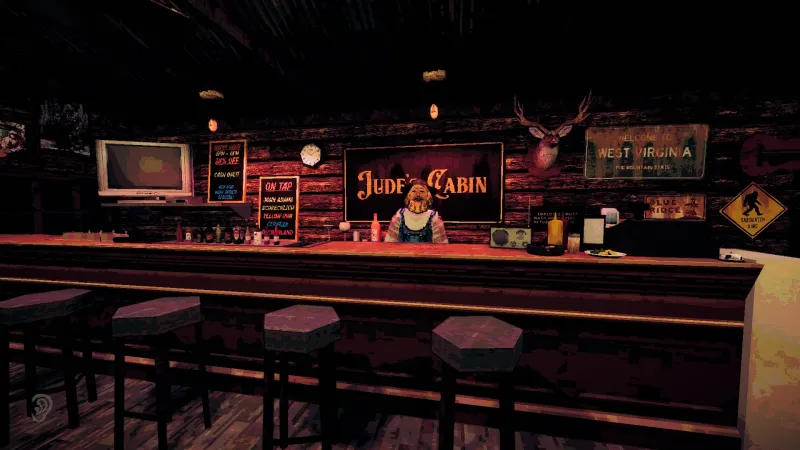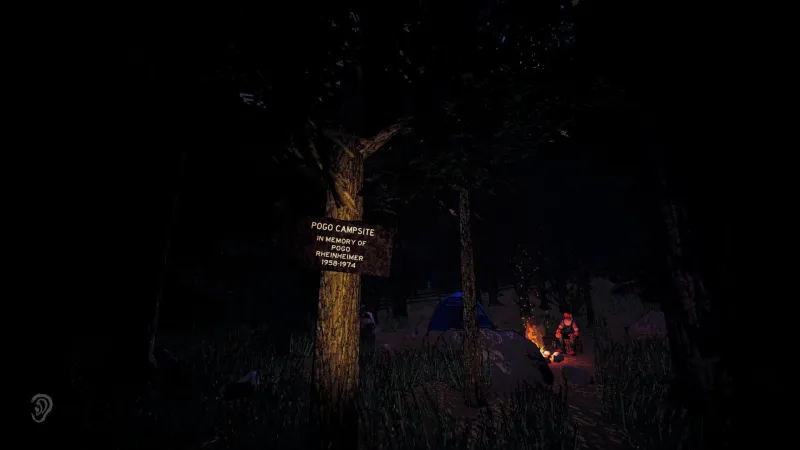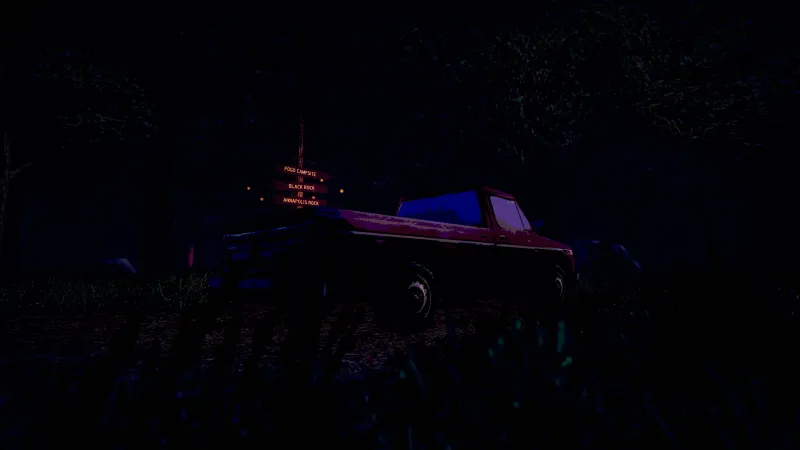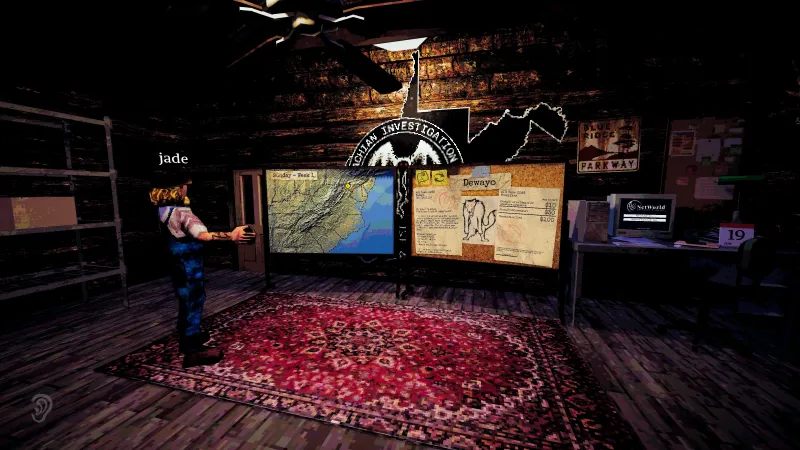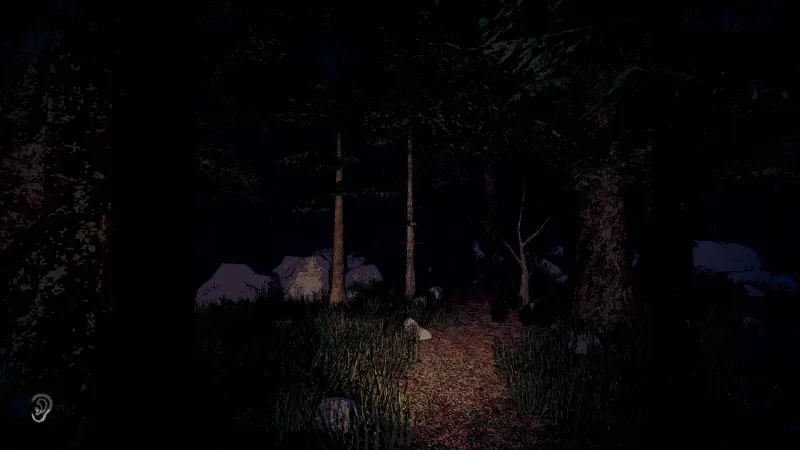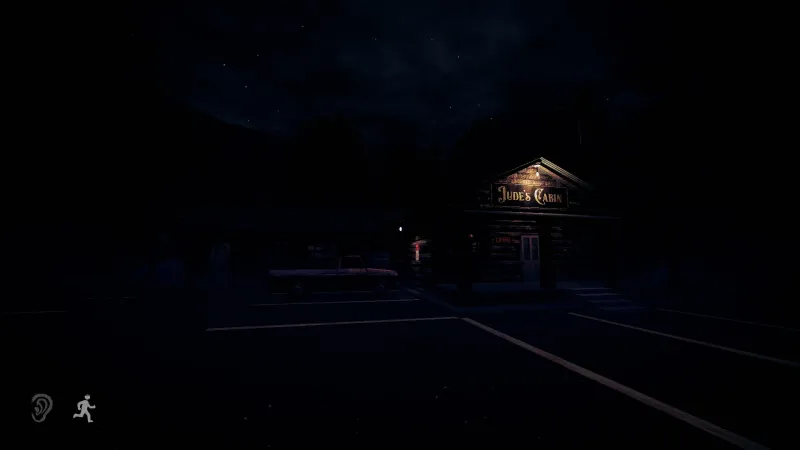Reading List
The most recent articles from a list of feeds I subscribe to.
ARC Raiders – Review In Progress
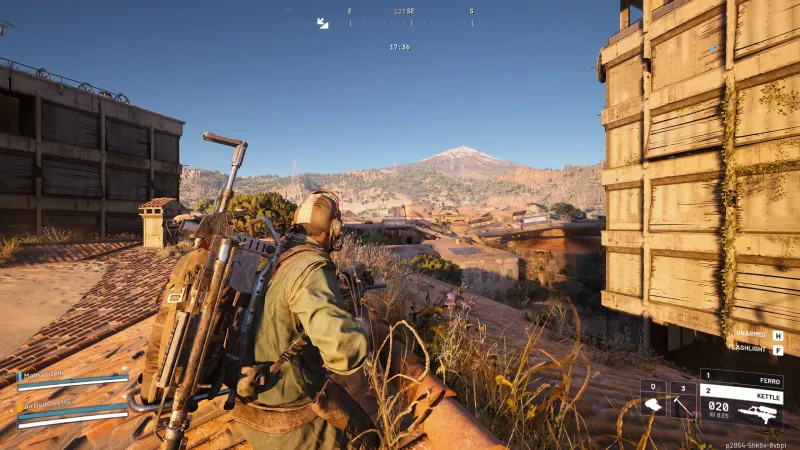
Earlier this year, I called ARC Raiders “the most promising extraction shooter I’ve played,” and after spending many hours with the final release, it seems to have lived up to my expectations. While I’m not ready to share a full review yet, as I still need to sink many more hours into various progression systems and maps, I can confidently say developer Embark Studio’s sophomore release is an impressive foray into the growing subgenre.
Launch Trailer | ARC Raiders:
The Division helped lay the groundwork for extraction shooters in 2016 with its fantastic Dark Zone, a walled-off area of New York City where players fought other competitors and NPCs alike to extract with their hard-earned loot before dying and losing it all. ARC Raiders carries this concept forward, expanding upon it with a robust crafting system, expertly implemented retro-futuristic art direction, and impressive artificial intelligence powering the robot enemies patrolling the game’s vibrant and derelict locations.
Before loading into their selected map, players equip themselves with various old-world weaponry, like marksman rifles and pistols, alongside a selection of futuristic gadgetry like shields, loadout augments (i.e., expanded backpack space vs. more quick-use slots), ziplines, special grenade types, and a lot more. You can always enter the game world with a free, randomized loadout if you've lost ample gear due to repeated deaths. While the free kit is basic, it’s a viable arsenal for most resource-gathering outings, and my friends and I have wiped unsuspecting enemy raiders with much better loadouts. I love outplaying a better-equipped squad with a thoughtful strategy, like using a Lure Grenade to attract a swarm of enemies to their position, and narrowly escaping via the contested exit with my hard-earned spoils.
I’m looking forward to playing more ARC Raiders over the weekend, so come back early next week to read and watch my full review. However, I can safely recommend the game to competitive multiplayer fans, especially those seeking a fresh (and more challenging) experience. I’ll have to wait to see if ARC Raiders is an easy recommendation for the everyday third-person shooter fan once I’ve put more time into it.
In the meantime, if you’re looking for something to play this weekend, check out Game Informer’s staff recommendations for games to play on Halloween.
Reader Discussion - What's Your Video Game Halloween Costume?

Happy Halloween, everyone! It's the scariest day of the year and, in my opinion, the most entertaining. I love Halloween as a fan of horror, sweets, and costumes, the latter of which offers a fun opportunity to masquerade as my favorite characters. And as a fan of games, dressing up as recognizable faces from the medium is extra special.
As a kid, Mario was an easy go-to costume (specifically Fire Flower Mario, which was "Best Mario" to me back then). In recent years, I've dressed as Mortal Kombat's Scorpion and Sub-Zero. If you watched the latest episode of our Resident Evil Outbreak Super Replay, I donned an extremely convincing Alyssa Ashcroft costume. As you can see, we're pretty much the same person.

Are you representing your favorite video game this Halloween? Share your costumes in the comments!
Our Favorite Scary Games + The Seance Of Blake Manor | The Game Informer Show
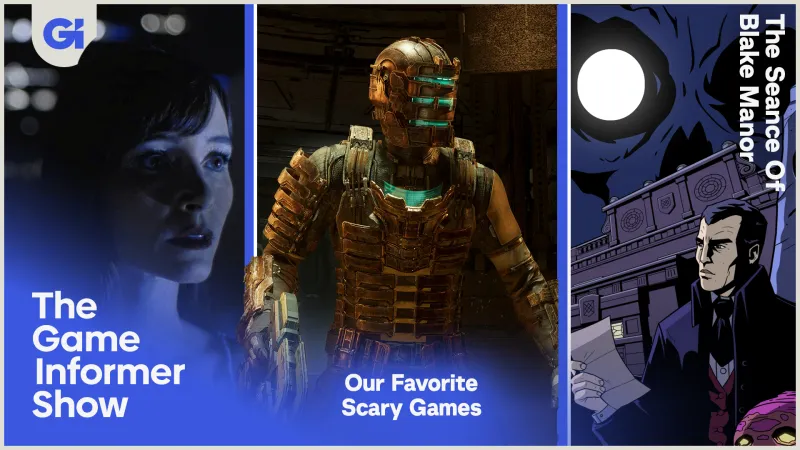
Watch the video version here:
Follow our guest and hosts on social media:
- Marcus Stewart (@marcusstewart7)
- Kyle Hilliard (@kylehilliard)
- Eric Van Allen (@seamoosi)
Jump to a specific discussion using these timestamps:
00:00 - Intro
08:39 - The Seance of Blake Manor
26:49 - Our favorite scary games
The Horror Video Games You Should Play This Weekend – October 31
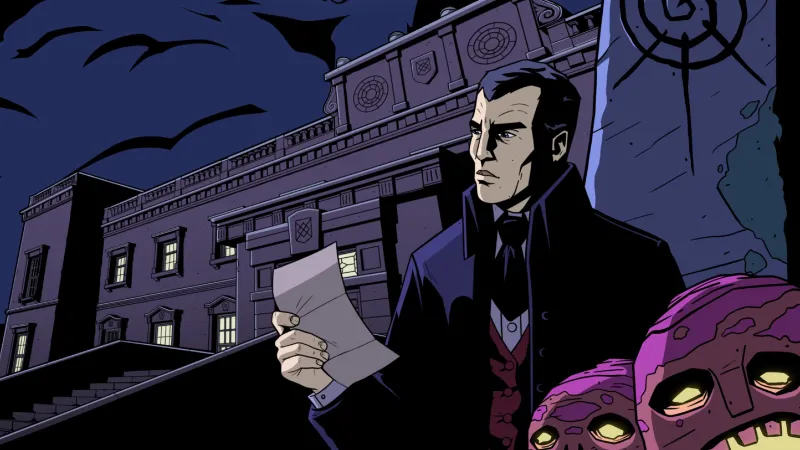
Happy Halloween Game Informer audience!
Even though it's the spookiest day of the year and we're busy petting black cats, carving pumpkins, eating all the Reese's Peanut Butter Cups out of candy variety bags before handing them out to children this evening, and walking under ladders, it's still Friday. That means we editors here at Game Informer have gathered up some editorial entries to share some games you should play this weekend. Considering it's Halloween, this week's round-up is a bunch of our favorite horror games and why you should consider checking them out for the holiday weekend!
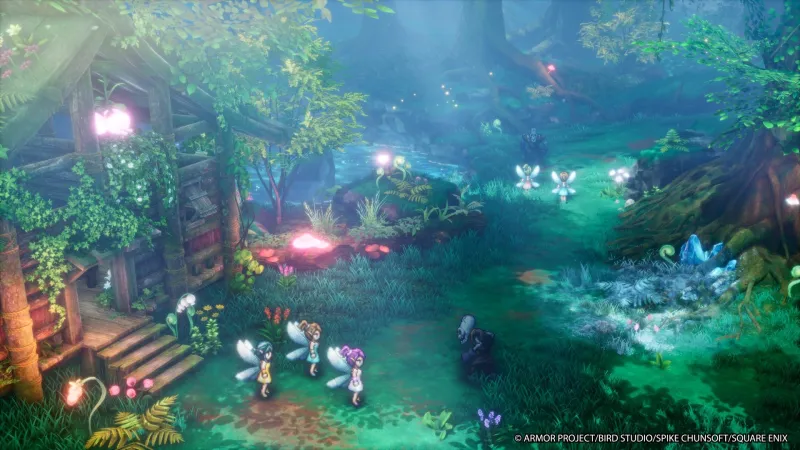
But before that, let's take a quick detour into all the fantastic stories we published this week. Brian Shea published his review of Mortal Kombat: Legacy Kollection and his review of Pokémon Legends: Z-A. Freelancer Nadia Oxford published her first byline at Game Informer with a review of Dragon Quest I & II HD-2D Remake. Looking outside of reviews, I posted an interview with Adriyan Rae, the actress behind Hazel in South of Midnight, and Brian dove deep into NBA Street successor NBA The Run. On the news side of things, it was a jam-packed week between sci-fi horror game Routine finally getting a release date, mass layoffs at Amazon, the first-ever Breath of the Wild vinyl release, a free Vampire Survivors x Balatro collaboration, and a team-up between Netflix and Life Is Strange developer Don't Nod, amongst plenty more.
And, as every Game Informer reader knows, that's just a lil dash of everything we published this week. Within our various other website sections, like video and features, there's plenty more to see and read, and we hope you do. As always, thank you for being a subscriber if you are one, and if you aren't, head here to join the growing ranks of the smartest and coolest and most fun audience in the world. Alrighty, roll the tape (or text or whatever):
Horror Games To Check Out This Weekend
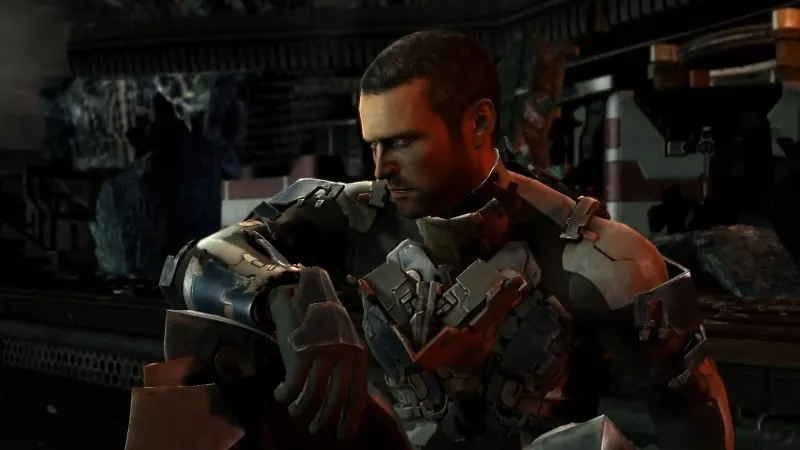
Dead Space 2
Dead Space, and its recent remake, are both excellent horror games that set the table for the Dead Space universe well, but Dead Space 2 is easily my favorite in the series and potentially my favorite horror game. I am big fan of the genre I like to refer to as “s*** going wrong in space,” and Dead Space 2 leans into that terror well by iterating and improving on the combat, and giving protagonist Isaac all kinds of excuses to face the vast emptiness of space. It’s also a game that pulled off the single-shot idea about seven years before God of War (2018) made it one of its major selling points. It’s a cool feature that I love in God of War, as well, but something about being stuck on various space stations and managing to survive the whole experience literally beside Isaac just works well for the horror genre.
It’s also home to the infamous eyeball scene (don’t look it up if you’re squeamish) and has an ending that I adore. I still occasionally look it up on YouTube when I want to relive it. I highly recommend it during this spooky season, even if you haven’t played the first game. But I will say, the remake of the first Dead Space is very good, too, so I would encourage you to play that one, as well. But 2 is better.
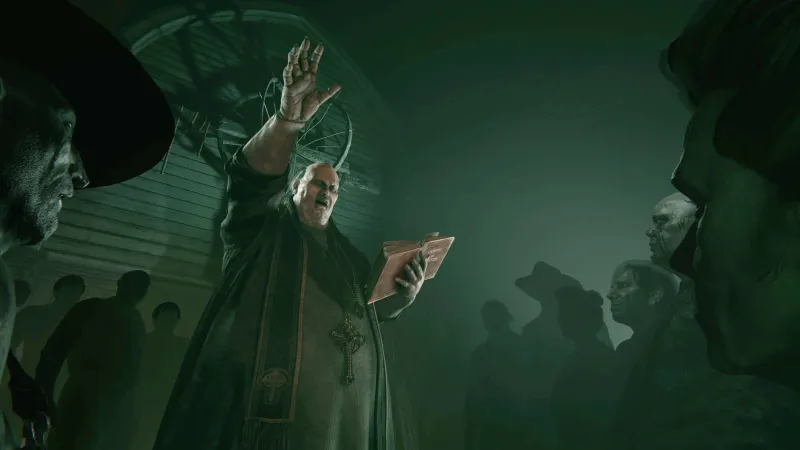
Outlast II
Outlast II launched more than eight years ago and still, it's the scariest game I've ever played. Perhaps it's my religious trauma; perhaps I watched movies like Wrong Turn and The Hills Have Eyes far too early; but the premise behind Outlast II – a spiritual leader leaves our "wicked world" behind to start Temple Gate, a town separated from even a trace of civilization, deeply and violently devoted to Christianity – still gives me goosebumps. What you encounter in the game itself is even scarier.
You explore Temple Gate looking for a way out, but that's far easier said than done, as everyone, from witch-like entities with sharp blades to the town's leader, Sullivan Knoth, will stop at nothing to prevent you from leaving. Outlast II goes places, places I don't think many horror games have explored, and its ending is shocking, gruesome, and frankly, f***ed up. But it's not hiding its goals: developer Red Barrels wants to terrify you with its take on the found footage/survival horror genre, and I'd be shocked if your skin doesn't crawl at some point in this seven-hour story.
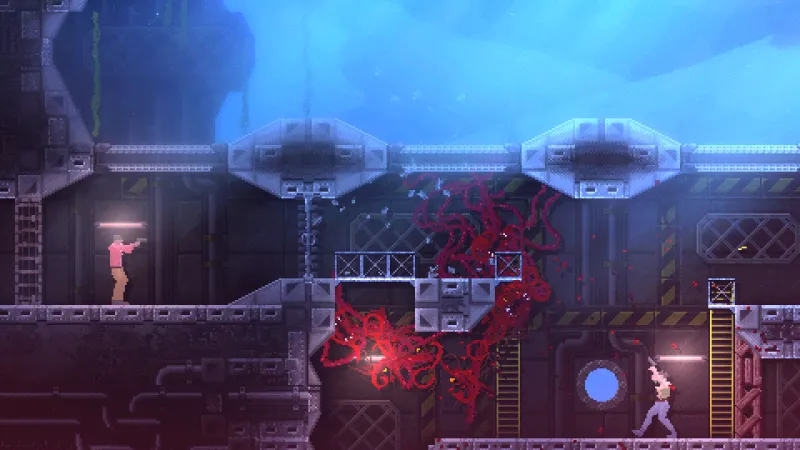
Carrion
If you're in the mood to flip the horror trope on its head, Carrion might be a good one to investigate. This sidescrolling action/exploration game takes cues from games like Metroid, but with a clever twist: You are a roaming tentacled blob creature, recently escaped from a research facility, and you're trying to escape. Along the way, humans who stand in your way are in for a very, very bad day. It's simultaneously horrifying and satisfying to play the other side of this horror movie trope, and the exploration and gradual evolution of powers is great fun.
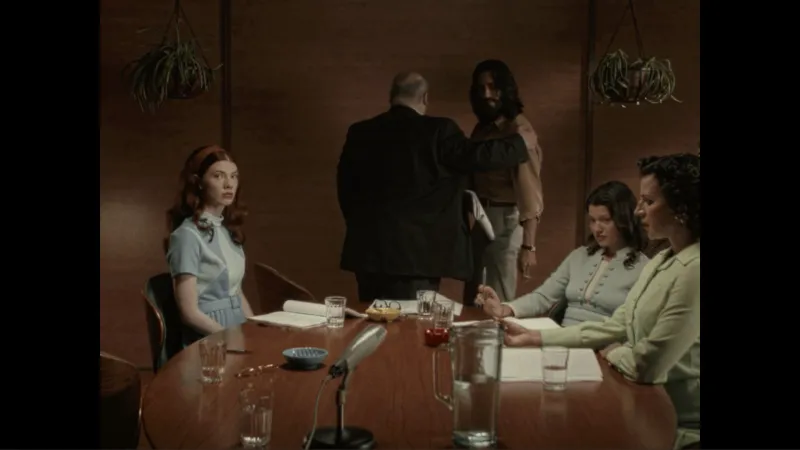
Immortality
Immortality is an unconventional horror game. You're not fighting for your life or running from monsters – you're combing through footage of old, unfinished films to learn why they never got made. Still, it's eerie from the first moments, purely because it feels like you're snooping where you're not supposed to and learning secrets better off forgotten. Without spoiling it, the process of actually unraveling those mysteries is genuinely unsettling, breaking the fourth wall in a way that's way scarier to me than zombies or masked killers. It's all propped up by fantastic, era-appropriate writing and performances to be one of my favorite games ever and a fantastic Halloween time experience, even for those who don't usually play games.
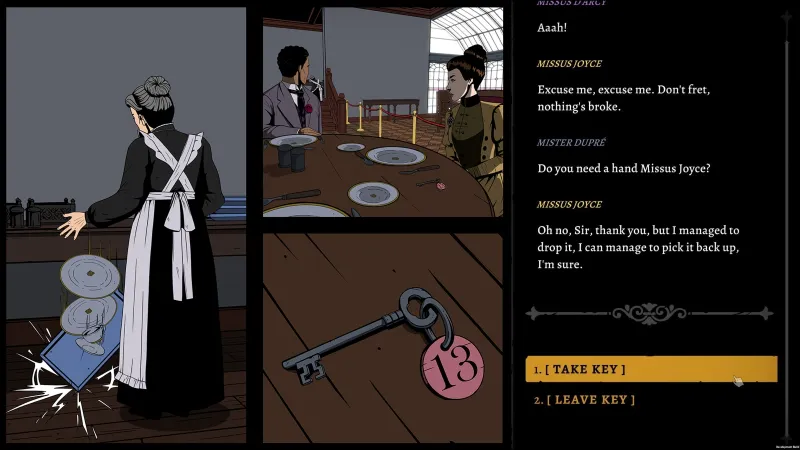
The Séance of Blake Manor
2025 has been a year of left-field surprises, and this spooky puzzle game is the latest to receive a ton of positive buzz seemingly out of nowhere. Set in 1897 Ireland, players control an investigator hired to locate a woman who went missing while staying at Blake Manor, a creepy residence turned hotel. Blake Manor is preparing to hold a séance – for what reason, I do not know – and it's far from the only supernatural occurrence happening during your stay.
If you enjoy unraveling mysteries like Return of the Obra Dinn or the Agatha Christie series, The Séance of Blake Manor may be up your alley. Solving the larger mystery involves combing environments for clues while analyzing and conversing with the Manor’s strange occupants. Unraveling smaller conundrums has been exceptional so far, thanks to fun, inventive puzzles that test your wits in logical, unexpected ways. I also like its approach to time limits, as each interaction spends one minute of an in-game clock; this means 30 interactions burn 30 minutes. This creates a sense of urgency and thoughtfulness to how you poke around, since you often have to act on a schedule; residents move around the hotel during certain times, influencing how you approach your investigations and when.
The Séance of Blake Manor is perfect for Halloween, as it features several overtly creepy moments, including some effective jump scares. I haven't checked into Blake Manor for long, but I’m a sucker for these types of mystery games; I look forward to sinking my teeth further into this fascinating adventure.
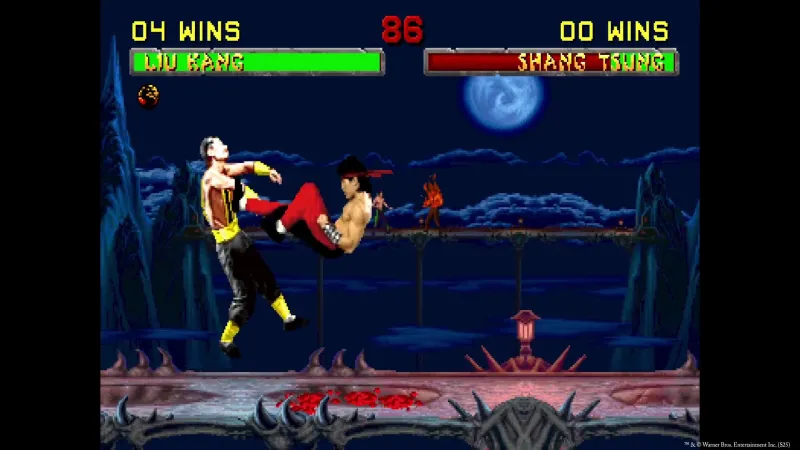
Mortal Kombat: Legacy Kollection
So, maybe this one is cheating a little bit, but there is no shortage of horror elements in the Mortal Kombat franchise. After all, the most iconic part about it is how you can rip, tear, decapitate, or dismember a defeated opponent in the most gruesome ways imaginable. This new compilation from Digital Eclipse, the studio behind notable collections such as Atari 50, Tetris Forever, and TMNT: The Cowabunga Collection, pays the same degree of love and care to the classic fighting franchise.
If you want to just play the games and watch the blood rain down like water, you can certainly do that, as Legacy Kollection features 23 games across arcade, consoles, and handhelds. But if you want to dive deeper into the history and making of the Mortal Kombat franchise, that's where the Legacy Kollection really shines. Hours of footage and dozens of relics from the past await in the interactive documentary from the team behind the original games, as compiled by Digital Eclipse.
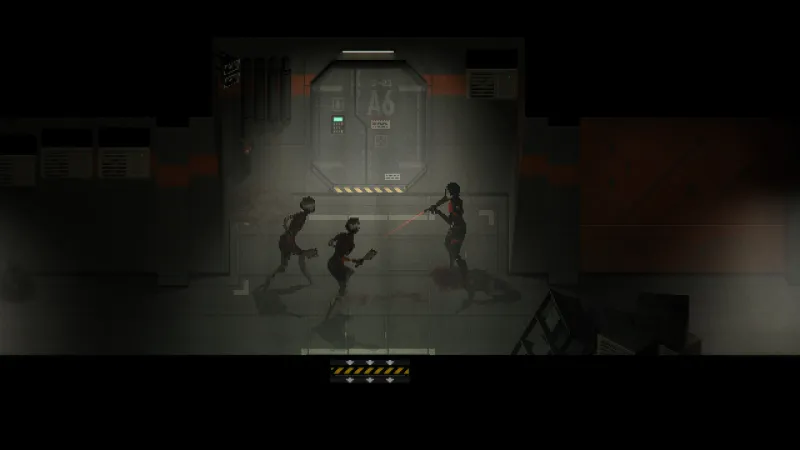
Signalis
It's been three (!!) years since Signalis came out, and it still feels like a prime example of how independent developers are doing incredible work in the horror space. This sci-fi chiller follows Elster, an android on a mission to find someone she cares for. In said pursuit, she – you – dive deep into a facility that's fallen to ruins, with few survivors and many more horrors haunting the halls.
Signalis is a brilliant survival horror experience that builds on some of the genre's best. Every run from one room to another feels tense, as the inventory management ensures you're never too prepared and never too strong. Tie in one incredible story filled with pain, regret, and despair, and it's a fantastic pit to get lost in this weekend.
Six One Publishing's First Game Is A Co-Op Appalachian Horror Adventure Called Blue Ridge Hunting
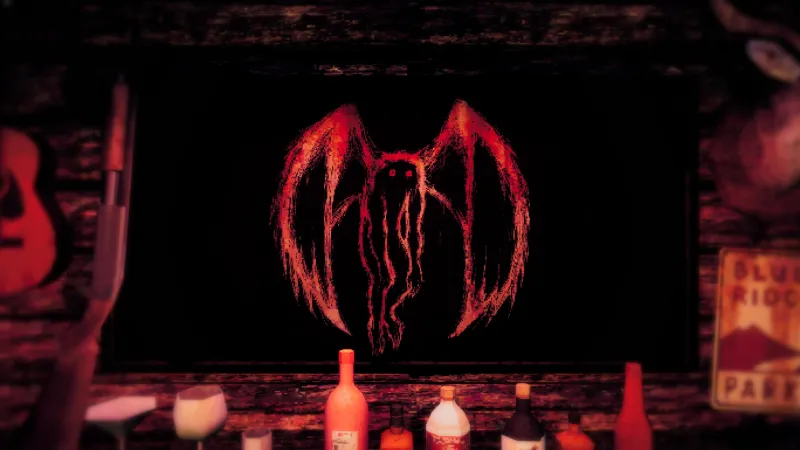
Six One Publishing, the new publishing arm of excellent games showcase maker Six One Indie, has revealed its first game: a co-op horror-adventure set in the Appalachian Mountains called Blue Ridge Hunting. Alongside this reveal, developer Jade & Company has launched a Kickstarter for Blue Ridge Hunting, which features exclusive goodies for all supporters, and a demo that's available right now on Steam.
In Blue Ridge Hunting, you and up to two more friends will investigate, document, and hunt cryptids, like the fabled Dewayo, in the Appalachian Mountains as part of The Appalachian Investigation Group. Check out the latest Blue Ridge Hunting trailer below:
"The Appalachian Mountains are home to some of the most infamous cryptids, creatures, and folklore in America," a press release reads. "Based on real sightings, phenomena, and legends from the region, join the Appalachian Investigation Group and use a variety of tools and items to collect evidence and track down these creatures. Get paid for successful hunts and invest your earnings in better gear. But be careful, as creatures are always listening and watching. Use proximity chat and your radio to communicate with one another, but try not to draw too much attention."
Six One Publishing says unique to the co-op horror, Blue Ridge Hunting will feature a "full story mode at its 1.0 launch," where players will follow the journey of Levi Chambers, a disgruntled West Virginia native haunted by sightings of the infamous Mothman his entire life. You will set off with Levi across Appalachia to "uncover the truth, encountering a wide cast of characters, terrifying monsters, and unforgettable stories along the way."
Check Out The Blue Ridge Hunting Screenshots Below
The publisher says Blue Ridge Hunting explores themes of generational trauma, grief, and family through the lens of Appalachian folklore, noting developer Jade Meadows of Jade & Company created this game as a love letter to the region's culture.
There's no release date in sight for Blue Ridge Hunting, but you can wishlist the game on Steam now and check out its demo for a taste of what these mountains offer.
In the meantime, read Game Informer's round-up of upcoming horror games.
Are you going to check out Blue Ridge Hunting? Let us know in the comments below!
